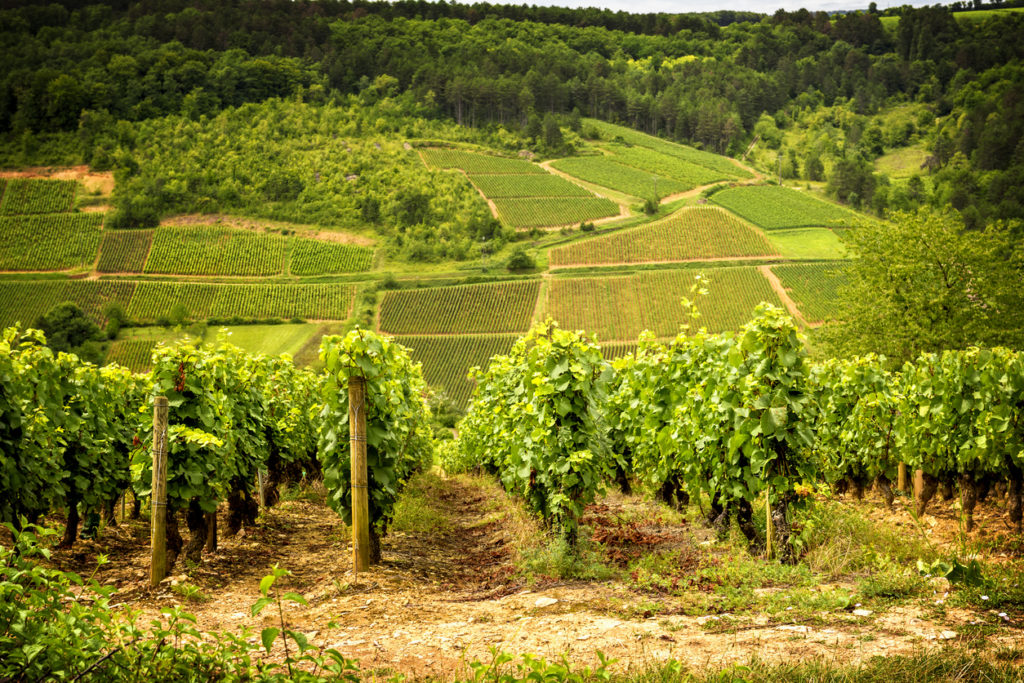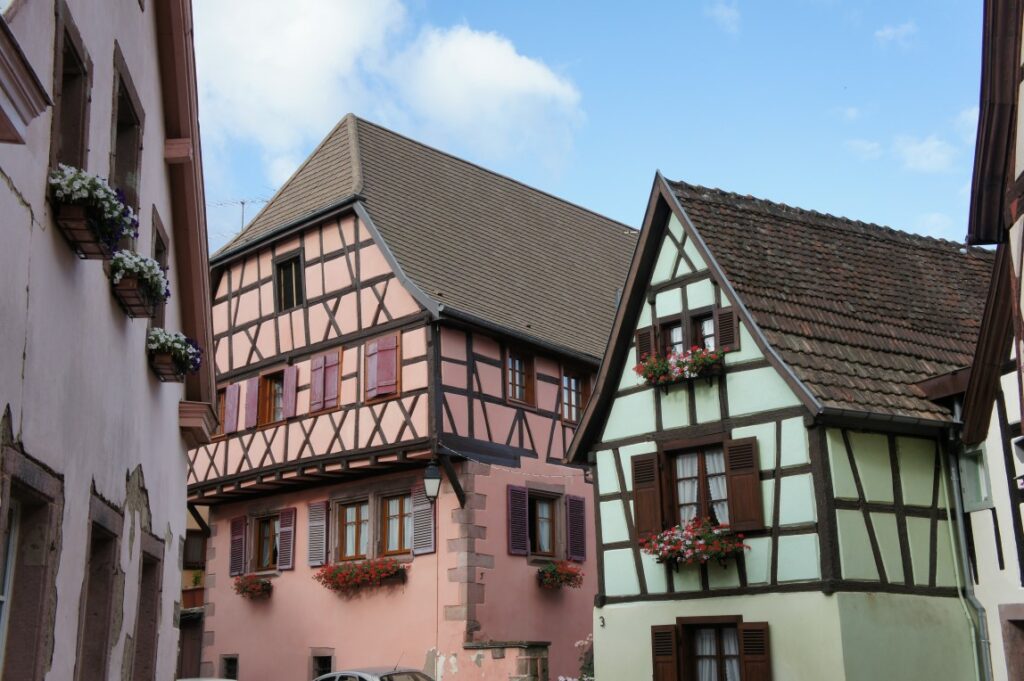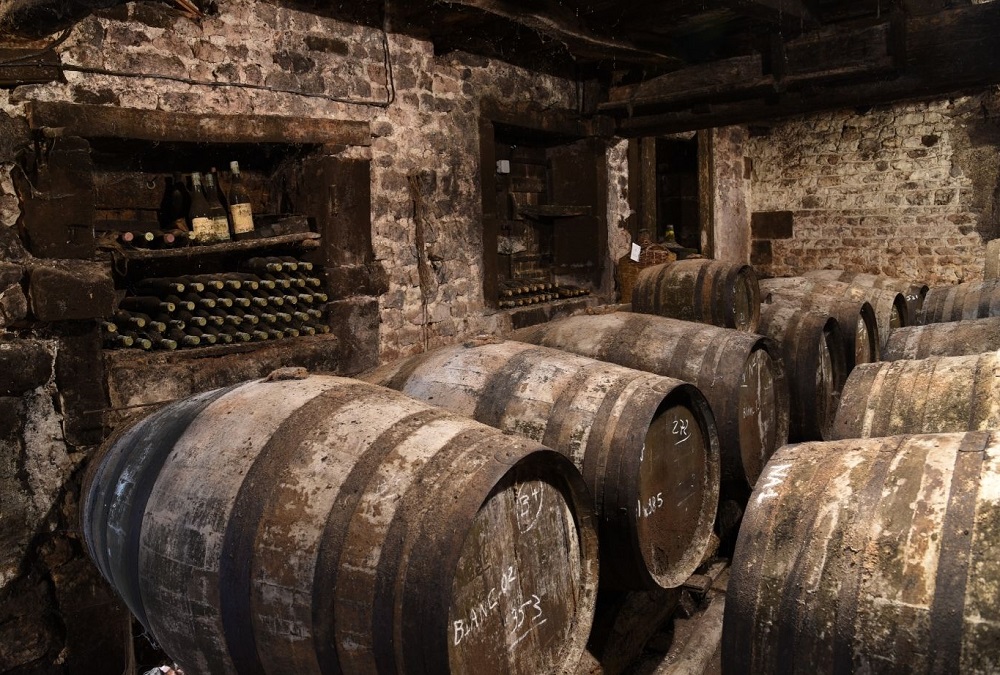Crémant is a sparkling wine that is often overlooked in favor of its more famous cousin, Champagne. However, this wine has a lot to offer in terms of taste and value. Crémant is produced using the traditional method, which involves a secondary fermentation inside the bottle.
This process creates the wine’s signature bubbles and gives it a complex flavor profile.
Production rules for Crémant vary depending on the region where it is made. In France, Crémant can be produced in eight regions, including Alsace, Bourgogne, and Loire. Each region has its own set of rules regarding grape varieties, aging requirements, and production methods.
The highest quality levels for french crémant are blanc de blancs and blanc de noirs sparkling wines. In the sparkling wine production only highest quality grapes are used.
What is Crémant?
Definition
Crémant is a type of sparkling wine that is made using the traditional method of second fermentation in the bottle, also known as the méthode champenoise. It is produced in various regions of France, such as the cremant d´Alsace, Cremant de Loire Valley, Crémant de Bourgogne, and others. Crémant is made from different grape varieties, depending on the region, but it is usually made from Chardonnay and Pinot Noir grapes.

History
The term Crémant was first used in the 1970s to describe sparkling wines produced outside champagne region of the Champagne region in France. The name Crémant comes from the French word crème, which means creamy, and refers to the fine bubbles of french sparkling wine that are characteristic of this type of sparkling wine.
Production Process
The production rules for Crémant are similar to those for Champagne. The grapes are harvested among others by Crémant de Bourgogne producers by hand, and the juice is fermented in stainless steel tanks. After the first fermentation, the wine is bottled with yeast and sugar, and a second fermentation takes place in the bottle.
This process creates the bubbles that are characteristic of Crémant. The wine is then aged on the lees for a minimum of nine months, which gives it a creamy texture and a complex flavor.

Types of Crémant
Crémant is a category of French sparkling wines that are produced using the same traditional method as Champagne, yet from other regions, and often leaning on grapes other than the traditional Chardonnay, Pinot Noir, and Pinot Meunier. Cremant is produced in most french wine regions.
Crémant de Bourgogne
Crémant de Bourgogne is made in the Burgundy region of France. It is produced using a blend of Chardonnay and Pinot Noir grapes. In the crémant de Bourgogne productionThe wine is aged for at least 12 months before release, resulting in a sparkling wine with a fine and persistent mousse, and a delicate aroma of white flowers and citrus fruits.

Pinot Noir grapes are also used for rose cremant or blanc de noirs cremant where the dark skins are quickly separated from the light flesh of the grape
Crémant de Loire
Crémant de Loire is made in the Loire Valley region of France. It is produced using a blend of Chenin Blanc, Chardonnay, and Cabernet Franc grapes. The wine is aged for at least 12 months before release, resulting in a sparkling wine with a lively and fresh character, a fine and persistent mousse, and a delicate aroma of white flowers and green apples.
Crémant d’Alsace
Crémant d’Alsace is made in the Alsace region of France. It is produced using a blend of Pinot Blanc, Auxerrois, Pinot Gris, Riesling, Chardonnay, and Pinot Noir grapes. Crémant d’Alsace is aged for at least 9 months before release, resulting in a sparkling wine with a fine and persistent mousse, and a delicate aroma of white flowers, citrus fruits, and honey.

The Alsace region with its vineyards in and around the vosges mountains is well known among wine professionals for its blanc de blancs and blanc de noirs sparkling wines.
Crémant de Bordeaux
Crémant de Bordeaux is made in the Bordeaux region of France. It is produced using a blend of Sémillon, Sauvignon Blanc, and Muscadelle grapes. The wine is aged for at least 12 months before release, resulting in a sparkling wine with a fine and persistent mousse, and a delicate aroma of white flowers, citrus fruits, and green apples.
Crémant de Limoux
Crémant de Limoux and blanquette de Limoux are made in the Languedoc-Roussillon region of France. It is produced using a blend of Chardonnay, Chenin Blanc, and Mauzac grapes. The wine is aged for at least 9 months before release, resulting in a sparkling wine with a fine and persistent mousse, and a delicate aroma of white flowers, citrus fruits, and honey.
Crémant de Savoie
Crémant de Savoie is made in the Savoie region of France. It is produced using a blend of Jacquère, Altesse, and Chardonnay grapes. The wine is aged for at least 12 months before release, resulting in a sparkling wine with a fine and persistent mousse, and a delicate aroma of white flowers, citrus fruits, and green apples.

Crémant du Jura
Crémant du Jura is made in the Jura region of France. It is produced using a blend of Chardonnay, Pinot Noir, and Trousseau grapes. The wine is aged for at least 12 months before release, resulting in a sparkling wine with a fine and persistent mousse, and a delicate aroma of white flowers, citrus fruits, and red berries.
Other Crémant Varieties
Apart from the above-mentioned Crémants, there are other varieties available as well. These include Crémant de Die, Crémant de Luxembourg, Crémant de Saumur, and Crémant de Vendôme.

Grape Varieties Used in Crémant Production
Crémant is a type of sparkling wine that is produced in different regions of France. The production of Crémant requires certain grape varieties to be used in the winemaking process. These grape varieties vary depending on the region where the wine is produced.
The following are some of the grape varieties that are commonly used in Crémant production.
Chardonnay
Chardonnay is a white grape variety that is commonly used in the production of Crémant. It is known for its ability to produce wines with a wide range of flavors and aromas. Chardonnay-based Crémant wines are known for their crisp acidity, citrus flavors, and delicate floral aromas.
Pinot Noir
Pinot Noir is a red grape variety that is commonly used in the production of Crémant. It is known for its ability to produce wines with complex flavors and aromas. Pinot Noir-based Crémant wines are known for their fruity flavors, subtle tannins, and delicate aromas.

Chenin Blanc
Chenin Blanc is a white grape variety that is commonly used in the production of Crémant. It is known for its ability to produce wines with high acidity and a range of flavors and aromas.
Chenin Blanc-based Crémant wines are known for their crisp acidity, floral aromas, and fruity flavors.
Cabernet Franc
Cabernet Franc is a red grape variety that is commonly used in the production of Crémant. It is known for its ability to produce wines with complex flavors and aromas. Cabernet Franc-based Crémant wines are known for their fruity flavors, subtle tannins, and delicate aromas.
Clairette
Clairette is a white grape variety that is commonly used in the production of Crémant. It is known for its ability to produce wines with high acidity and a range of flavors and aromas. Clairette-based Crémant wines are known for their crisp acidity, floral aromas, and fruity flavors.
Merlot
Merlot is a red grape variety that is commonly used in the production of Crémant. It is known for its ability to produce wines with fruity flavors and soft tannins. Merlot-based Crémant wines are known for their fruity flavors, subtle tannins, and delicate aromas.
Sauvignon Blanc
Sauvignon Blanc is a white grape variety that is commonly used in the production of Crémant. It is known for its ability to produce wines with high acidity and a range of flavors and aromas. Sauvignon Blanc-based Crémant wines are known for their crisp acidity, herbal aromas, and fruity flavors.

Pinot Meunier
Pinot Meunier is a red grape variety that is commonly used in the production of Crémant. It is known for its ability to produce wines with fruity flavors and soft tannins. Pinot Meunier-based Crémant wines are known for their fruity flavors, subtle tannins, and delicate aromas.
Muscat Blanc à Petits Grains
Muscat Blanc à Petits Grains is a white grape variety that is commonly used in the production of Crémant. It is known for its ability to produce wines with floral aromas and fruity flavors. Muscat Blanc à Petits Grains-based Crémant wines are known for their floral aromas, fruity flavors, and crisp acidity.
Aligoté
Aligoté is a white grape variety that is commonly used in the production of Crémant. It is known for its ability to produce wines with high acidity and a range of flavors and aromas.
Aligoté-based Crémant wines are known for their crisp acidity, herbal aromas, and fruity flavors.

Other Grape Varieties
Other grape varieties that are commonly used in the production of Crémant include Grolleau, Grolleau Gris, Pineau d’Aunis, Arbois, and Orbois. These grape varieties are known for their ability to produce wines with unique flavors and aromas.
Crémant wines made from these grape varieties are known for their complexity and depth of flavor.
Crémant Production Rules and Regulations
INAO Regulations
Crémant is a traditional method sparkling wine that is produced in several regions across France. The production of Crémant is regulated by the Institut National de l’Origine et de la Qualité (INAO), which oversees the quality and authenticity of French wines.
The regulations set by the INAO specify the grape varieties that can be used, the production methods that must be followed, and the aging requirements for the wine.

AOC Appellations
Crémant is produced in several AOC (Appellation d’Origine Contrôlée) appellations, including Alsace, Bordeaux, Burgundy, Jura, Limoux, Loire, and Savoie. Each appellation has its own set of rules and regulations that must be followed in order to produce Crémant.
For example, Crémant d’Alsace must be made from Pinot Blanc, Pinot Gris, Pinot Noir, Riesling, Chardonnay, or Auxerrois grapes, while crémant de Bourgogne, must be made from Chardonnay and Pinot Noir grapes.
Production Rules and Requirements
The production of e.g. Crémant de Bourgogne follows the same traditional method used to produce Champagne. Grapes are harvested by hand and then whole bunch pressed. The juice is then fermented in barrels, and a second fermentation takes place in the bottle, which creates the bubbles.
The wine is then aged on its lees for a minimum of nine months, although some appellations require longer aging periods. The dosage, or the amount of sugar added before corking, is also regulated and must not exceed a certain amount.

Ageing and Phenolic Content
The aging of Crémant de Bourgogne, Crémant d’Alsace and other french sparkling wine is an important factor in its quality and taste. The longer the wine is aged on its lees, the more complex and rich its flavors become. The phenolic content of the wine, which is the amount of tannins and other compounds in the wine, also contributes to its taste and texture. Crémant typically has a lower phenolic content than Champagne, giving it a lighter and more delicate flavor profile.
Tasting and Food Pairing
Flute vs. Wide-Bowled Glass
When it comes to tasting Crémant wines, the type of glassware used can make a significant difference in the experience. While a flute is the traditional choice for sparkling wines, some experts suggest using a wide-bowled glass to allow the wine to breathe and release its aromas fully.
A wider glass can also enhance the wine’s texture and flavors, making it a great choice for Crémant de Bourgogne, Crémant d’Alsace and other french sparkling wines with complex characteristics. However, it’s important to note that a flute can help preserve the wine’s bubbles and carbonation, which is an essential part of the Crémant experience.

Tasting Notes and Characteristics
Crémant wines are known for their dryness, high acidity, and crispness, which make them perfect for pairing with a range of foods. They are also versatile and can be made in a variety of styles, including white, rosé, and blended.
When tasting Crémant wines such as Crémant d’Alsace or Crémant de Bourgogne, you’ll notice a range of flavors and aromas, depending on the style and blend. Some common tasting notes include citrus, apple, pear, and almond, as well as floral and mineral undertones.
Food Pairing Suggestions
With white Crémant wines, try pairing with grilled fish, roasted chicken, or creamy pasta dishes. For rosé Crémant such as Crémant d’Alsace rosé, consider pairing with spicy Asian cuisine, grilled vegetables, or fruit-based desserts.

Overall, Crémant wines offer a unique and versatile tasting experience, with a range of styles and flavors to suit any palate. Whether you’re looking for a refreshing summer sipper or a complex wine to pair with a special meal, Crémant is an excellent choice.

